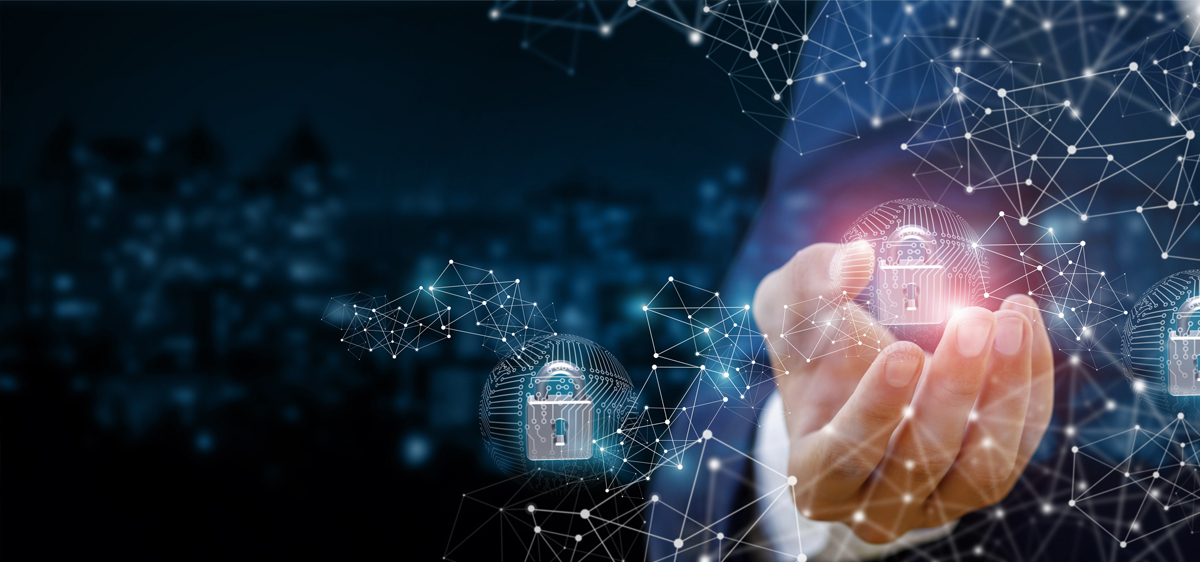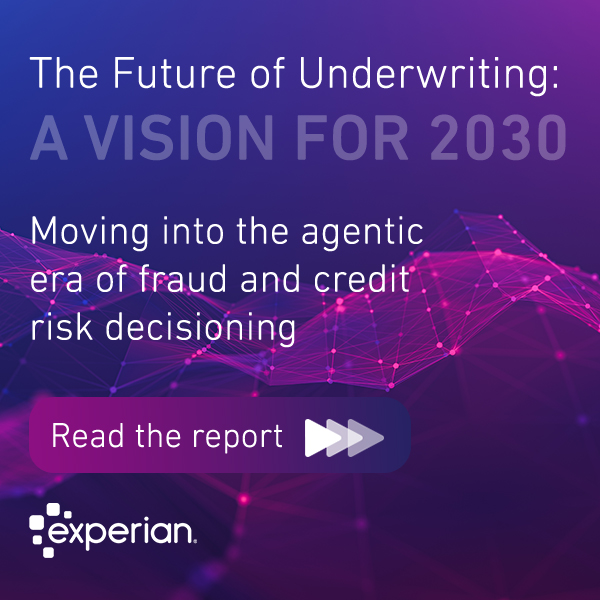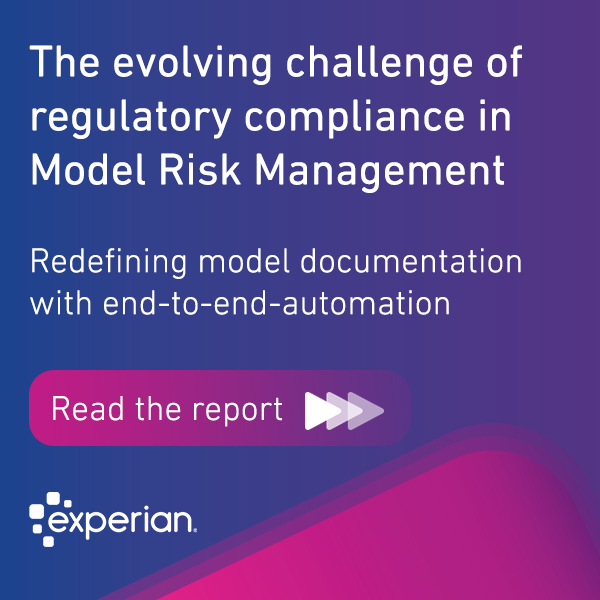Search Results for: DATA AI

Download the report People’s changing behaviors to safeguard their health during the ongoing global Coronavirus pandemic has fueled a massive shift to digital channels. As people’s day-to-day routines and behaviors shift, so too is the attention on businesses to find new ways of staying relevant to their customers. Two-thirds of consumers are staying loyal to the businesses they preferred prior to Covid-19. 20% increase in overall online transactions – a 41% increase in online grocery shopping, 40% increase in applying for loans online, and a 22% increase in food delivery or takeout. 50% of consumers surveyed expect to increase their online transactions even more in the next 12-months. Uncertainty for what the next 6-12 months will hold has people and businesses vacillating between optimism and pessimism. Some likely contributing factors could be public health gains and setbacks for containing the virus, some businesses opening only to close again, and the prospect of some students returning to school in-person and while others go remote – and what all of that means for economic recovery. At the time of our study (June 30 -July 7, 2020), some lenders and retailers are demonstrating more confidence than others, while consumers - many already feeling depleted - are expecting and bracing for an expected second wave of Covid-19. Consumer financial hardship 65% of people believe their country has not yet recovered from the economic impact of the pandemic. 30% of consumers reported a decline in household income; India saw the largest household decline at 43%. The number of people having difficulty paying their bills has doubled since Covid-19 began. Businesses operational challenges 53% of businesses believe their operational processes have mostly or completely recovered since Covid-19 began. The U.S. (80%) is the most confident and Germany (27%) is the least. Top challenges faced by most businesses globally are the health and safety of their employees and customers, adjusting operations to support customers, and managing increased demand across channels and functions. 1 in 5 businesses surveyed lacks confidence in the effectiveness of their credit risk and collection decisions since Covid-19 began. Beyond their intense focus on the safety and security of their employees and customers, our research shows that businesses are making strategic investments – to give consumers greater access to goods and services, and to better manage their customer relationships. They’re also exploring automation and cloud technology to relieve operational constraints. Whether it’s a lender providing financial assistance to small businesses and loan re-payment options to customers or it’s a retailer providing essential supplies and services to people who need it most, helping people and delivering on expectations for secure, relevant customer experience is top of mind. Top areas of investment: strengthening the security of mobile and digital channels, new credit risk analytics, and the creation of artificial intelligence (AI) models and increasing digital customer acquisition and engagement. Top 3 solutions businesses believe will improve operational efficiency when supporting customers’ financial needs are automated decision management, cloud-based applications, and artificial intelligence. 60% of businesses plan to increase the budget for analytics and credit risk management. Businesses in the UK, U.S., Australia, and Spain have already increased the adoption of AI and advanced analytics. To solve for the lack of economic precedent, 51% of businesses say they’re asking customers to contribute more information/data and 49% say they’re exploring new or alternative data sources. Download Experian's Decision Analytics Global Insights Report July/August 2020 and learn more about the impact of Covid-19 on consumer behaviors and business strategies

Chris Ryan, Senior Fraud Business Consultant, talks to Nick Zulovich at the Auto Remarketing podcast about the new ways we are seeing fraud surface as the global pandemic evolves. "The pattern of activity that we're seeing that has really attracted my interest is this notion of human farming. A human farm is a pool of paid labor who research information on potential fraud victims using data that's been stolen through data breaches and using information that people publish through social media and other outlets. The objective of a human farmer is to be able to assemble a detailed profile of a potential fraud victim so that the perpetrator can better impersonate them and navigate around potential security measures and other obstacles that would normally be in the way." Chris Ryan, Senior Fraud Business Consultant Why the opportunity for human farming? People are out of work so there's a recruitment opportunity for those in need of an income. There is a flood of people into the online space who might not ordinarily engage digitally. This demographic may not be tech-savvy and maybe more susceptible to fraud methods such as phishing. Resources that typically screen for fraud are suffering due to office closures. The combination of high tech fraud to find potential victims plus skilled human intelligence makes these methods highly effective. New trend amidst new circumstances - the rise of synthetic ID Remote transactions combined with the high-value nature of the auto industry makes it a very attractive prospect to fraudsters. Even though purchases are down, the fraudsters are still active. Synthetic identity fraud, in particular, continues to be attractive because the identities are not real and therefore not suffering from the same downturn as genuine profiles. Listen to the full podcast here. Related articles: Getting to grips with the shifting fraud landscape Infographic: Top Global Fraud Trends 2020 Covid-19 as a Gateway to Fraud: Top 5 Global Fraud Trends to Watch Out for in 2020

Insights from Harry Singh, SVP, Global Decisioning, and Hristo Zahariev, Global Product Manager. Due to the global pandemic, one of the key challenges facing many consumers today is the ability to obtain support either from their credit provider or from government. This is manifesting itself in two ways – consumers facing very short-term financial difficulty, which might mean a payment holiday for a few months, or longer-term structural issues such as unemployment, which requires a very different set of treatments and outcomes. But what can businesses do to ensure consumer demand is met while taking care of customer experience? We look at the importance of digital channels within the decisioning environment, and how investment using AI can not only lead to consumer satisfaction now but also a sound business strategy for the future, regardless of how unpredictable that future may be. How the industry can respond to consumers during this time of need A recent study from March this year looked at businesses that are not yet fully digital in terms of how they handle their consumer interactions, and how they can reach out to consumers to help them during the Covid-19 crisis. With call centers and operational centers closed, and anything between five and 50,000 applications a week coming into banks across the world since the pandemic began, businesses have inevitably been struggling with demand. Based on existing operational models examined within the study, if businesses were to manually manage these applications, they would need to double in size in terms of full-time employees, and follow-up interactions post approval may still not be met. Managing demand and staying compliant, while enabling consumers to successfully interreact without waiting hours to get through is the challenge faced by many businesses. It’s a balancing act that is both an opportunity and a risk and should be treated as such. Helping consumers in a way that is digital, while allowing for self-serve, is fundamental in meeting these new levels of demand - and doing so in a way that doesn’t feel demeaning to the consumer is where true differentiation begins. During a stressful time for consumers, it’s important that businesses step up to the challenge of demystifying their interactions, removing embarrassment around finances while also retaining an element of human engagement. Thanks to AI and a layered, cloud-first approach to decisioning, contacting pre-qualified consumers for both forbearance and hardship can now be done through a business’s banking application or their website, using artificially intelligent virtual assistants that can be deployed in a multitude of different digital channels. The consumer perspective: we need more than a chatbot Chatbots are very effective and useful in many ways, but when an interaction gets complex or there's something of a regulated or more subjective nature, it becomes difficult for that chatbot to provide the kind of service consumers are looking for. The answer lies in continuous learning, which moves away from the decision tree structure of a traditional chatbot and into the realms of natural language processing. The new age of virtual assistant remembers interactions and then learns from them, has short-term and long-term conversation goals, and recognizes small talk. The result feels a lot more empathetic and allows for always-on and real-time consumer interaction. How businesses can develop their strategies not only for today, but going forward Bringing together digital capabilities, analytical insights, and data to understand the affordability of a consumer is critical. Using demographic and geographic data, businesses need those insights, regardless of whether we are in a growth environment, a benign environment, or as we're seeing right now, a recession of macro-economic downturn. Businesses choosing to invest now to address their operational and strategic challenges are not just responding to Covid-19, they are looking beyond and into strategic requirements of the future. Financial difficulty may be more acute right now, but it has always existed and always will, for various reasons.

In this episode of Insights in Action, David Britton, Vice President of Global Identity & Fraud Solutions, discusses how the Covid-19 pandemic has prompted a massive shift to online for both consumers and businesses, and examines what implications have emerged across the online fraud landscape because of this. "As with any moment like Covid-19, fraudsters are very quick to pick up on possible areas of vulnerability that they can exploit in the market and in the ecosystem. And fraudsters always like to go where the weakest point is in the ecosystem or the weakest link in the chain. So fraudsters are absolutely taking advantage of this."David Britton Phishing is on the rise - fraudsters are impersonating key institutions and their communication channels to manipulate consumers Account takeover fraud - fraudsters are hiding in the traffic peak, posing as consumers using their credentials How businesses can counter the trend: Keeping online fraud at baySecuring our digital identitiesEnsuring a secure, transparent and meaningful treatment of data "The first thing to do is to ensure businesses are pulling together soft signals to define a better risk strategy and authentication strategy because then you can immediately identify if there's an anomolous actor that's trying to impersonate that 'known' good customer."David Britton Listen to this episode of the Insights in Action podcast

The interesting thing about fraud is that it’s always changing. Fraudsters are getting smarter, and fraud threats are constantly evolving. Businesses need to be agile and prepared to quickly shift their fraud strategies to stay a step ahead of emerging fraud threats. Traditionally, it's been very difficult for businesses to keep up – every time they see a shift, new fraud signals must be employed, which means looking at new intelligence signals in order to counter that fraud and then moving through a process of procurement and qualification, and then implementation and integration, of fraud services in order to manage the change. With time of the essence, businesses can no longer wait months to react. They need to be able to react in real-time. Biggest threats for 2020 Covid-19 has accelerated online payment transactions, making way for massive cyber security and data fraud concerns among banks and retailers. The idea of doing more digital business, picking up customers digitally, providing a great digital experience is going to be more and more important as we move through the pandemic. Even businesses which traditionally see most of their customer traffic through bricks and mortar might start to see that shift. All of this means that there is more opportunity for fraudsters to be part of the process and to take advantage of that digital interaction. The risk of fraud is going to increase as more people go digital – In part because of sheer numbers, and in part because more of the people who are going online now maybe doing so for the first time. So companies and consumers alike are less prepared for that kind of interaction. Account opening is likely to drop because of Covid-19, but we should expect to see a sharp increase in account take over fraud. There are a lot of people who are being forced to go online now to transact. They may need to turn to ecommerce. They may need to look at online banking to move their banking online. But the point is, they may never have gone online to perform these tasks before. Many vendors have been rapidly rolling out new technology solutions to help banks and retailers manage this new online demand, which has potentially exacerbated digital fragmentation, privacy concerns, and governance expectations. The importance of continuous risking and self-service The speed at which fraudsters adapt to new technology and behavior has always been a problem, but now that we are seeing sudden and unpredictable change, reacting at speed with new fraud strategies has never been more important for businesses. Typically, businesses need to move through validation, contract and then integration in order to do this – making for a long and tedious (not to mention expensive) process. The new release of CrossCore will pre-qualify fraud and intelligence services so that they are pre-integrated meaning that businesses can choose how they want their transactions to be processed, which fraud and identity services they want to use, and they can do so through simple self-service. There is also a feedback loop where reports are generated on how much fraud was detected. Businesses can access their feedback loop almost in real-time and see if their fraud strategies are working or not, and then adjust things as they go. Customer experience when all of your customers are online The ability to passively and strongly identify a customer is a difficult balance to strike when the goal is not to inconvenience the user. And now that most consumers are running their lives online, they demand not only a secure experience, but a convenient one too. To achieve this, a lot of signals about that person are collected. These range from device characteristics and who it is registered with, to behavior on the device and whether these signals match up to the same person. In order to process this data, the signal streams that come in must be considered and then almost in real-time, fraud analytics allow a decision to be made on whether the interaction is with a genuine person or a fraudster. To be able to reduce friction while passively and strongly identifying a person, advanced analytics becomes integral. More about how our latest upgrades can help your business

The decisioning landscape is changing rapidly. In parallel to this, digital continues to redefine the customer experience with a big focus on removing friction from the customer journey. Mounting expectations around online customer experience mean that we are seeing a digital transformation both in terms of consumer interaction, and what the businesses are processing in the background. The front and back end are no longer mutually exclusive, and the driving force behind this transformation is digital, and it’s enabled by the cloud. How the pandemic has shifted priorities Before the Covid-19 pandemic took hold, businesses were well on their way to recognizing this. Digitizing more workflows while incorporating a truly customer-centric view was the goal of 2020. A Gartner report shows that in January, priorities for CIOs centered around Cloud and DevOps. This push to shorten the development lifecycle by combining software development and IT operations into a single discipline, alongside demand for Robotic Process Automation, using bots to focus on automating high volume repetitive tasks, were top of the list for businesses. By April, these priorities had changed. Businesses quickly shifted their focus to the pandemic, and with that, the need to enable remote or home working. But Cloud remains firmly within the top three. We look at why cloud-first decisioning remains critical to digital transformation, now more than ever. Why Cloud-first is even more important now Managing cash flow: When a CIO is in the cost optimization mode and trying to conserve cash, scaling back on the use of existing Cloud technology can afford immediate cost savings. Cloud cost for infrastructure of the service, or platform of the service, and even some software of the service is often tied to the business. The less usage, the more savings. When a CIO needs to implement new technologies in 2020, Cloud can offer the most cash flow optimized needs to do so. Less cash is spent upfront to acquire Cloud technology than to buy data center systems or licensed software. Business agility: Cloud technology makes it much easier to keep systems up to date and secure, alongside feature enhancements and new releases. The Cloud minimizes lengthy and costly delivery projects with solutions that can be deployed in weeks, not months and years. Customer journey: Many established market leaders are running digital transformation programs that re-orientate their business away from functional and product silos to focus on customer journeys enabled by Cloud services. Keeping it simple: Simplification is crucial. Simplifying the IT environment with Cloud services that eliminate the need to manage hardware and other infrastructure. Using Cloud-native architecture to support auto-scaling, zero downtime for upgrade. Security is paramount: The challenge to identify and fight fraud by analyzing behavior during the data capture process is ever-present. Software needs to evolve all the time to adapt to threats, and it needs to continuously update with new features to help businesses remain competitive. Businesses need to protect consumer digital accounts from Account Takeover threats while balancing consumer convenience. Cloud-first impacts all layers, from consumer interactions to data sourcing and processing, from fraud detection to identity verification, and at the heart of areas like credit and decisioning. Integrated decisioning, and decisioning that is governed and can be clearly explained to both the auditor and to the regulator is the goal of every business, and it is enabled by the cloud.

“Password Incorrect"Are businesses making progress identifying customers online, or are they continuing to frustrate those customers with archaic identification and authentication methods? Businesses engaging with their customers online walk a precarious tightrope between offering a frictionless experience and securing user accounts against fraud. But with ever-evolving technology, we look at how businesses can get a grip on the changing world of fraud while offering a great customer experience. While easy digital experiences matter to end-users, especially now that any physical customer interaction is temporarily on hold, make no mistake about it: security is the most important factor when it comes to building trust with your customers. In fact, our annual Global Identity & Fraud report, published in February 2020, found that 74% of consumers consider security the most important factor related to their willingness to conduct business online. Moreover, ease of access to their accounts was a close second, with 72% of respondents saying they want less friction and more user-friendly solutions. But keeping track of multiple, complex passwords across hundreds of digital accounts and running a gauntlet of authentication hurdles is the antithesis of what customers want. The Evolution of Identification Businesses that are truly committed to providing customers with a secure and frictionless experience online are moving beyond traditional fraud mitigation methods when it comes to customer identity. They're adding multiple intelligent layers, many of which are completely invisible to end users, to add security and enable the fast, easy access customers expect. Traditional analogue measures, like signature cards and face-to-face interactions with customers by a bank employee, are nearly extinct. Now, like those dinosaurs of the pre-internet world, many digital fraud protection measures are also being rendered obsolete because they just aren't robust enough to confidently identify customers. But technology can help businesses address this disparity. More sophisticated strategies, such as the development of machine learning and artificial intelligence, can provide faster and more accurate authentication – while being less intrusive user experiences. Technology for Trust Thanks in large part to the rapid growth of smartphones and mobile devices, we've seen more sophisticated methods of authentication. One of the most common forms of two-factor authentication today are the nearly ubiquitous one-time passcodes that are sent by email or text. This second layer of authentication ensures that the user is in possession of the hardware being used for access and has access to a confirmed email account or mobile device. A downside of using these codes for verification, however, is that the user has to access email or messaging, which adds friction to the process, and is still not (on its own) immune to fraudsters. There is no one-size-fits-all solution The white knight of trust is a dynamic approach to both identity verification and authentication. To accomplish this, businesses need to layer solutions that provide insight into devices and behaviors on top of traditional two-factor options. Then apply advanced analytics to stop fraud while allowing 99% of customers to breeze through sign-up and ongoing account access. Many of the latest identity authentication controls are 'passive', so customers won't even notice that they are happening, making the customer experience both secure and smooth. Passive authentication can include behavioral risk assessments that compare the device against historical activities from the customer as well as evaluate how the customer is inputting information or navigating the page. This, paired with other measures such as enrolling customers' biometrics and using them for ongoing account accesses, can help ensure a seamless online experience. Looking for the right signals across data sources can quickly flag risk and move the customer through the digital enrolment or login without unnecessary friction. Related articles: Covid-19 as a Gateway to Fraud: Top 5 Global Fraud Trends to Watch Out for in 2020

There isn’t a roadmap for navigating through times like these but the reality can’t be ignored. The effects of the pandemic will forever change how lending businesses operate and engage with customers long after the health crisis is over. Businesses and consumers have basically been pushed to engage with each other digitally en masse and there are practical challenges that banks and financial services are faced with today that need to be addressed. Some of these issues require short-term adjustments to manage things like increased volume of call center inquiries with a remote workforce. But other issues have put a spotlight on massive areas in need of modernization such as the management of liquidity and risk. Businesses need to think critically about how they will use technology and innovation to transform their credit risk and fraud operations to better serve customers across channels. Here are three cost-effective strategies that will connect you with your customers faster and in their greatest time of need – now and post-Covid. Respond to the change in a fair and consistent way. Regulatory bodies and credit risk policies are designed to prevent against unfair lending decisions. But when federal funding to provide stimulus and pressure for payment holidays take hold, it’s creating a lot of uncertainty for how to handle its impact on the portfolio. Strong operational decision management capabilities provide businesses a way to quickly test new strategies and deploy them. In fact, this isn’t all that new to large banks and financial institutions. But smaller banks have considered it “out-of-reach”, a perception that isn’t true nor acceptable at time when there are solutions available on the cloud. A huge benefit to moving your strategy management to the cloud is the ability to flex up or flex down your costs at time when balancing your cash flow and discretionary spend or technology investments is a top priority. Flexing up for increased customer demand to handle hardship or government-backed small business loans is going to be fundamental during this crisis, and where cloud-based strategy management will really pay off. A further benefit is that you remove the complexity of the IT infrastructure and get access to enhanced features whether it’s new data sources, models, or improvements to security. This is especially important as we all know, necessity is the mother of all innovation and there will be a need to get more from your current software without wanting to replace legacy systems. Models that drive decisioning still work. Despite the lack of historical precedent for the current scenario, data and analytics are very effective in this rapidly changing environment. For example, many people are facing financial hardship right now which means businesses need a way to efficiently receive and process applications that out-sort those in need of special servicing. Understanding who was headed into default prior to Covid-19 and who is experiencing short-term default because of this situational unemployment is key for delivering the right products and terms. In fact, if there is anything transferrable from the 2007/08 recession (which was entirely different from what the world is experiencing now), is that you need to use analytics to discern habits from new behaviors and ensure you don’t use vanilla treatments for both. Businesses will undoubtedly see their analytics teams overstretched during this period, so now is the time to reduce the manual load and invest in machine learning and AI. These advanced tools can offer the fastest and best results for getting the right analytical capabilities or models in place. For larger organizations, this will mean having the agility to rapidly update and deploy existing models, and for smaller ones, it will mean building this from the ground up. To help, our data scientists have recently identified over 140 consumer credit attributes that can offer some insights even in unprecedented times to: Identify financially stressed customers earlierPredict future payment behavior accuratelyRespond to profile changes faster Re-define the customer journey. Businesses should remove all unnecessary friction by inspecting the customer journey right down to every click and interaction. Why is this important? It remains to be seen exactly what customer behaviors and expectations will take hold but it’s likely to leave a lasting imprint. The contactless way consumers engage with businesses puts more and more pressure on how effectively they’re using data and customer insights to make their interaction relevant. Relevance in the form of – Do I recognize that this is my customer enrolling in or accessing their account(s) or is it suspicious?What do I know about this customer to proactively adjust or deliver a contextually appropriate offer or the terms they will accept?Are there signs of “mental drop-out” or abandonment that signal improvements to the experience are needed?How can I deliver the same experience across channels and simplify complex transactions, like enrollment?Do my customers feel secure and do they trust my business to protect their information? This is an opportunity for organizations to reflect upon how they do business, both in terms of how effectively they operate, but also in light of consumers changing expectations about the way that they want to engage with the wider community. Beyond the data, having an appropriate and empathetic response to customers who feel stuck can increase rapport, build loyalty, and open new possibilities to work together in the future. Related articles: Digitally managing your at-risk customers most impacted by Covid-19Proactively restructuring debt to help improve customer affordabilityPredicting customer payment behavior in a time of extreme uncertaintyStay connected to your customers in times of unexpected change

The speed at which the world is feeling the impact of Covid-19 is unparalleled. Because of this customer affordability has shifted into the unknown and businesses are trying to react quickly to assess customer risk in a brand-new context, albeit a temporary one. We look at the five key areas businesses should be considering when it comes to customer affordability. 1. Looking to insights The last financial crisis taught us that the first line of defense for many organizations, large and small, is to move straight into proactive debt restructuring to reduce the volume of customers who would otherwise fall immediately into debt collection. This crisis is no different, but identifying those in hardship, restructuring debt at speed, and in line with restricted policies are where businesses should be focusing to successfully tackle this. 2. Keeping regulators front of mind As a result of the last downturn, many financial regulators are placing a much higher weight of responsibility on lenders to make fair and transparent lending decisions when it comes to affordability. Not just when it comes to new lending, but also how they act and behave within collections. These rules are not going to be relaxed, so it’s important that businesses continue to prove that they remain compliant. 3. Predicting what’s to come Anticipating arrears before they happen, and at speed, is fundamental to managing the restructure of debt effectively. Especially where traditional data sources provide less predictive value. For businesses without advanced and automated debt restructure or collections-based program to begin with, this is an opportunity to develop something that will carry them through this time of crisis and beyond. 4. Harnessing analytics and AI Thinking predictively means getting the right analytical capabilities or models in place, ideally harnessing Machine Learning and AI to get the fastest and best results. For larger organizations, this will mean having the agility to rapidly update and deploy existing models, and for the less mature, it will mean building this from the ground up (but quickly). Businesses will undoubtedly see their analytics teams overstretched during this period, so now is the time to reduce the manual load and invest in these capabilities. 5. Automation for demand control Making sure customers can deal with organizations digitally will be critical to maintaining customer experience. It’s just as important to ensure that channels are integrated and automated in the backend. Businesses are looking to omni-channel digital solutions to help feed new demand through the funnel without having the added complication of a restricted workforce. It has never been more important to automate. More on Decision Analytics

Shifting behaviors to comply with government orders to social distance and stay at home has pushed most consumers globally to purchase online the essential items and services that they would normally buy in person. This sudden, massive shift has led businesses to prioritize the safety of their employees, customers from exposure to Covid-19 and find new ways of engaging with one another. During social isolation, biometrics may become the closest form of contact we have to the physical world. In this Q&A, I will try to address how businesses around the world are using biometrics and how consumers feel about it. How are businesses adjusting to the coronavirus ‘new normal’? Businesses are playing a direct role in slowing the spread of Covid-19 by helping customers make better and more use of digital and remote channels. They’re adjusting operations, communications and servicing to support rapidly evolving consumer behaviors, preferences and overall experience. Amidst natural fear distress that most people are feeling today, businesses are focusing a lot of time on how best to support a smooth transition to digital for all customers – ranging from digital-natives to customers that have never used digital before and were otherwise satisfied offline prior to the pandemic. The elderly need more support than ever at this dire time, and all sorts of organizations are going the extra mile to engage with them and make them feel accompanied even when they might be physically separated from their regular support networks. Financial services providers including HSBC, Barclays, Wells Fargo, Tangerine, and Santander are increasing their reliance on previously adopted voice recognition and other biometrics-based systems to speed up the ID verification process at their call centers. Similarly, other biometrics such as behavioral characteristics present in keystroke patterns and personal signatures are garnering more interest than ever before by retailers and healthcare providers to ensure secure, meaningful digital engagements with their customers. Ultimately, digital disruption is the new normal and Covid-19 has underscored the critical role that technology plays in driving value – a point that was often overshadowed by cost and unfortunately ignored until now. How is the global Covid-19 pandemic changing the way we transact? The shift to digital is also a retreat from physical and that includes physical points-of-sale, currency in the form of physical banknotes, and all other transaction mediums that contemplate physical contact as they can also potentially act as a means of spreading infection. Health authorities advise to use touchless technology where possible. This means that voice-based technology, mobile payments, digital signatures and remote account opening may become the recommended norm. Responding to this urge to go contactless, businesses of all sizes are adopting or expanding remote practices virtually overnight. Rolling contactless payment options to retail and services providers, strengthening online and mobile offerings or leaning on digital identity verification and online authentication are all part of the strategies we see being rolled out globally to fight the spread of coronavirus and to prepare for the aftermaths of the pandemic. On another note, the growing speed and sophistication of fraud related to Covid-19, as well as the rushed shift to remote working may also be adding to the general concern about transacting online, calling for heightened ways to ensure trustworthy digital experiences. What available technologies can be leveraged during and after the pandemic? Contactless credit and debit cards, mobile payments and electronic wallets, barcode and QR code readers are all known, established technologies that are gaining prominence and have the backing of health experts like the CDC. Chatbots that alleviate the heightened demand for 24/7 customer service, digital identity verification and authentication software for remote account opening and onboarding are also facilitating meaningful exchanges between consumers and organizations and helping flatten the curve of coronavirus contagions. Besides, voice and behavioral biometrics offer consumers another interface for information and services which goes beyond the confines of the screen, making it easier for certain populations to benefit from technology. What can businesses do to secure online engagements? With most transactions moving online to prevent contagion, pressure is up for businesses to create secure digital engagements. Regardless of which identity proposition is adopted by a company, now more than ever, the need to establish the verifiable claims that constitute a person’s identity is fundamental to doing business digitally. This happens at both the point of enrollment into an identity proposition and ongoing to ensure the identity hasn’t been tampered or compromised. Before the coronavirus outbreak gained the current magnitude, we launched the third annual edition of the Experian Global Identity & Fraud Report. Our research shows that creating a trusted, best-in-class customer experience is achievable with the right levels of security and reduced friction, which together provide easy access to accounts when and where the consumer wants it. Even in challenging times as the ones we are living, businesses can leverage data to build a more dynamic, less rigid approach to identity verification and customer recognition. The pandemic has boosted the growth of connected devices over the past moths, further accelerating the data generation process. Data needed to create more secure online exchanges can be gathered through the passive observation of consumers’ interactions such as their device configurations, behavioral biometrics, cross-business transactional history, shopping and purchasing habits, location data, etc. On top of requiring minimal active involvement from the customer, this approach offers sound reassurance for both consumers and organizations: spoofing a wide variety of identity attributes is indeed more difficult than stealing Personally Identifiable Information (PII), usernames or passwords, making it virtually impossible for fraudsters to impersonate legitimate users. Additionally, businesses improved ability to accurately identify consumer preferences and habits translates into better, more meaningful user experiences. Amidst the global health crisis, can biometrics become the catalyst for online trust? Many of the technologies and much of the data for achieving that coveted online trust may already be available to businesses today but may not be effectively harnessed. Take biometrics, for example. The majority of consumers (81%) view physical biometrics as the more secure form of identity verification, per our research. Conversely, as user IDs and passwords become more exposed to fraudsters, various organizations across industries are using biometrics to develop next-generation identification controls that combat fraud, make transactions more secure, and create trusted, enhanced customer experiences. Driving adoption is certainly key to effect change. The good news is that biometric authentication is already part of our daily lives. Facial recognition to unlock mobile devices and fingerprint scanners to facilitate purchases are only a couple of examples of how engrained biometrics already are in our daily lives. In fact, voice recognition was very promising even before the first coronavirus outbreak took place in Wuhan, China, with banks including HSBC, Barclays, Wells Fargo, Tangerine, and Santander using voice recognition to speed up the ID verification process at their call centers. During the pandemic, consumers are further warming up to voice-based security systems for its speed and ease of use, as well as for the sense of proximity and the comfort of the known they bring. Voice biometrics are also being favored by government and law enforcement agencies because its role in identifying emergency callers, call center frauds, and crime investigations. What trends and technologies will remain in a post-coronavirus world? Contactless payments are probably staying for the foreseeable future. Layered customer authentication approaches have also been around for a while and don’t seem to be going anytime soon. We certainly support those, as not only they are proven, but also currently accessible and accepted by regulators. Biometrics in the form of face recognition, liveness detection, video meetings and other methods play varying roles in effectively enforcing digital identification strategies, being increasingly adopted around the world. A year ago, the Hong Kong Monetary Authority issued advice on “remote on-boarding of individual customers,” requesting document-based authentication to be combined with relevant technology including facial recognition and liveness detection. The German model is centered on video verification and has been often updated to make onboarding efficient and reliable; identification and verification is relies on live, two-way video with bank compliance staff. Numerous new identity propositions are emerging worldwide in response to consumers’ desire to be known and recognized at every interaction. Before the pandemic, over 90 percent of businesses feel these new identity propositions – including but not limited to reusable IDs, federated IDs, Tokenized IDs and decentralized IDs - play an important role for re-recognizing their customers. Pre-pandemic research shows that the desire for a better experience, and concerns around security, still shape the digital relationship between consumers and businesses. Two thirds of the consumers we surveyed earlier this year said that security is the most important factor when deciding to engage a business, followed closely by ease of access to their accounts. Likely that sentiment hasn’t changed since the pandemic started but increased: consumers expect businesses to continue to address their top priority – security – with renewed strength to secure their trust given the rapidly evolving environment.

Awareness is key for both businesses and their workforce when it comes to phishing fraud. But in a world where digital engagement has suddenly ramped up a notch (or ten), it is becoming increasingly difficult to differentiate between what's real and what's not. Mike Gross, Head of Global Identity and Fraud at Experian, recently spoke to Jill Malandrino at Nasdaq Trade Talks about the key things to watch out for when it comes to phishing scams. Here's a round-up of what was discussed: New opportunities for phishing The global pandemic has opened up new routes for phishing scams. Fraudsters are great marketeers in a crisis, and they thrive on people's curiosity. From fake charity organizations claiming to be investing in Covid-19 related treatment to new government support schemes - if it sounds too good to be true, it probably is. Remote working Individuals are now forced to work from home but still have a responsibility to protect customer data. New processes have exposed gaps that fraudsters can exploit as there are typically fewer controls on home networks. Businesses must ensure that the right security is in place for their employees. regardless of the business size. Habits have shifted, and so have the fraudsters The pandemic will change the way we operate forever - how businesses enable remote workers, how consumers interact with commerce and how kids learn today - this is impacting our lives on the social side as well as the work side. Fraud will follow suit. Reacting to the crisis with a layered defense Phishing has dramatically increased, but phishing itself doesn't cause losses. It's the gaps in the controls - organizations may not have proper layered controls in place to defend themselves against these more sophisticated, or multi-channel attacks - that's what leads to the increases in losses. No one had a chance to prepare for this crisis - everything is different now than it was a month ago, from customer service, online demand, a flood of certain types of applications - businesses are not set up for the scale of demand. Listen to the full interview

The year 2020 will go down in history. That much is certain. Businesses are acting quickly to revise strategic and operational plans that seemed perfectly valid in January – now almost impossible to imagine, just a few months later. However, predictions around fraud trends still stand. The opportunistic nature of hackers means that a global crisis can create the perfect breeding ground for fraudulent activity, and with users increasingly seeking solace and communication via digital means, businesses and consumers need to be even more vigilant. Here’s what we found earlier in the year. Investment in fraud prevention is on the rise. According to our 2020 Global Identity & Fraud report, 84% of businesses say they are either investing more or maintaining the same budgets when it comes to identity-related fraud prevention. But with a complex digital landscape, rapid changes in consumer behavior, and customer experience playing a central role, how can businesses be sure that they are investing in the right place? We identified the top 5 global fraud trends to watch out for in 2020: 1. Authorized push (or wire transfer) payment fraud In the past 12 months, the most common fraud attack encountered by businesses were authorized push or wire transfer payment fraud (41%). Set to continue into 2020, authorized push payment fraud (or APP) is where victims are tricked into authorizing a payment from their own account to another account which is being controlled by a criminal. Fraudsters can socially engineer consumers or intercept communications, changing key information such as account details, leaving victims believing that they are authorizing a legitimate transaction when in fact they are making a payment into a criminal's account. Validation is crucial in tackling APP fraud Push payment fraud can be prevented with a validation exercise which carries out real-time checks, dramatically reducing the chances of payment fraud and error. It can be used to confirm that the beneficiary of a payment owns the bank account to which a payment needs to be sent to. As with many fraud prevention methods, one layer of verification is rarely enough so it's important that techniques like real-time validation sit within a wider fraud prevention and authentication strategy. 2. Account takeover fraud Next in line is account takeover fraud (37%), which is expected to significantly increase in light of the recent global pandemic. This is when a fraudster gains access to an account that doesn't belong to them and makes unauthorized transactions, sometimes changing key credentials of the account such as the rightful account owner's personal information or log-in details. This type of attack often involves phishing attempts to compromise customer data is much more likely in light of various government assistance programs due to the crisis. In recent years, fraudsters have done a great job of taking over bank login credentials, getting access to a user's account, then calling that account holder to inform them a fraudulent transfer is being attempted from their account. Since customers know that banks typically send SMS one-time-passwords for customers to verify transactions, the attackers use that layer against the account holder. Know Your Customer (KYC), Customer Identification Program (CIP), use of passwords and physical biometrics make up the top solutions currently used by businesses to detect and protect against fraud based on regulatory requirements. Although businesses seem confident in the ability of their existing solutions used to detect and protect against fraud, they are reporting 57% higher losses associated with account takeover fraud, so what's going wrong? Businesses must confidently engage customers using holistic and advanced, risk-based identity and device authentication, as well as targeted, knowledge-based authentication that allows good customers to move throughout the process and frustrate fraudsters. 3. Account opening fraud The third key fraud trend to watch out for in 2020 is account opening fraud. This takes place when criminals use stolen personal information to open new accounts for fraudulent activity such as borrowing money in another person's name. Identity verification is often the easiest control to bypass because so much identity data is compromised. Averting account opening risk requires strong identity authentication, proving that the person applying for the account (often digitally) is indeed the legitimate consumer. Acquiring legitimate customers from the beginning, whilst balancing a seamless customer experience is the challenge businesses face when it comes to account opening fraud. By improving the application process and identity-based authentication measures, businesses can decrease customer acquisition costs, reduce false positive rates, and save manual reviews for when they're really needed. 4. Transaction payment fraud Transactional payment fraud is any unauthorized transaction using stolen payment details or data. Fraudsters involved in this kind of criminal activity can range from small-scale amateurs to large-scale cyber-criminal rings. Criminals access stolen details in many ways, including phishing emails, and even direct contact with the victim. The key to combatting transactional payment fraud is the ability for businesses to quickly detect irregular activity, and then distinguish between legitimate and fraudulent transactions in real-time. In transactional fraud, strong fraud machine learning models and pattern and anomaly detection logic are key passive controls, with step-up challenge layers requiring customers to provide additional identity authentication when trying to complete high-risk activities or anomalous transfers. 5. Synthetic identity fraud (also known as fictitious identity fraud) One of the newest types of fraud, synthetic identity fraud uses a blend of fake information and real data to create brand new fake identities that expert-level criminals use to establish and build up an online credit history. Businesses can invest time and money in chasing people that turn out to not even exist. Synthetic identity fraud is an insight into the evolving world of fraud, and a reflection of how the criminal world reacts to sophisticated fraud prevention by becoming ever more sophisticated themselves. The role of advanced analytics The deployment of robust link analysis that monitors over time the use of identity elements such as name and Social Security/National Insurance, plus many other forms of personal information is paramount in tackling fraud. The ability to detect when identity elements look to be used inconsistently or at high velocities can be an indication of larger identity compromises or synthetics. Businesses should also utilize device intelligence to monitor common access points through which more organized fraud schemes may be occurring. In some instances, synthetic identity detection scores can also make up identity verification and fraud prevention layers, providing businesses with a separate synthetic identity score with each account opening event. This is because synthetic identity is difficult to detect with traditional verification controls or risk models. The good news is that the strategy to protect your customers and your business from these different trending types of fraud is similar - organizations need a strong layered series of defenses to both to recognise legitimate customers and to quickly pinpoint attackers if they want to combat fraudsters. New research available: The global impact of Covid-19 on businesses and consumers - September/October 2020




